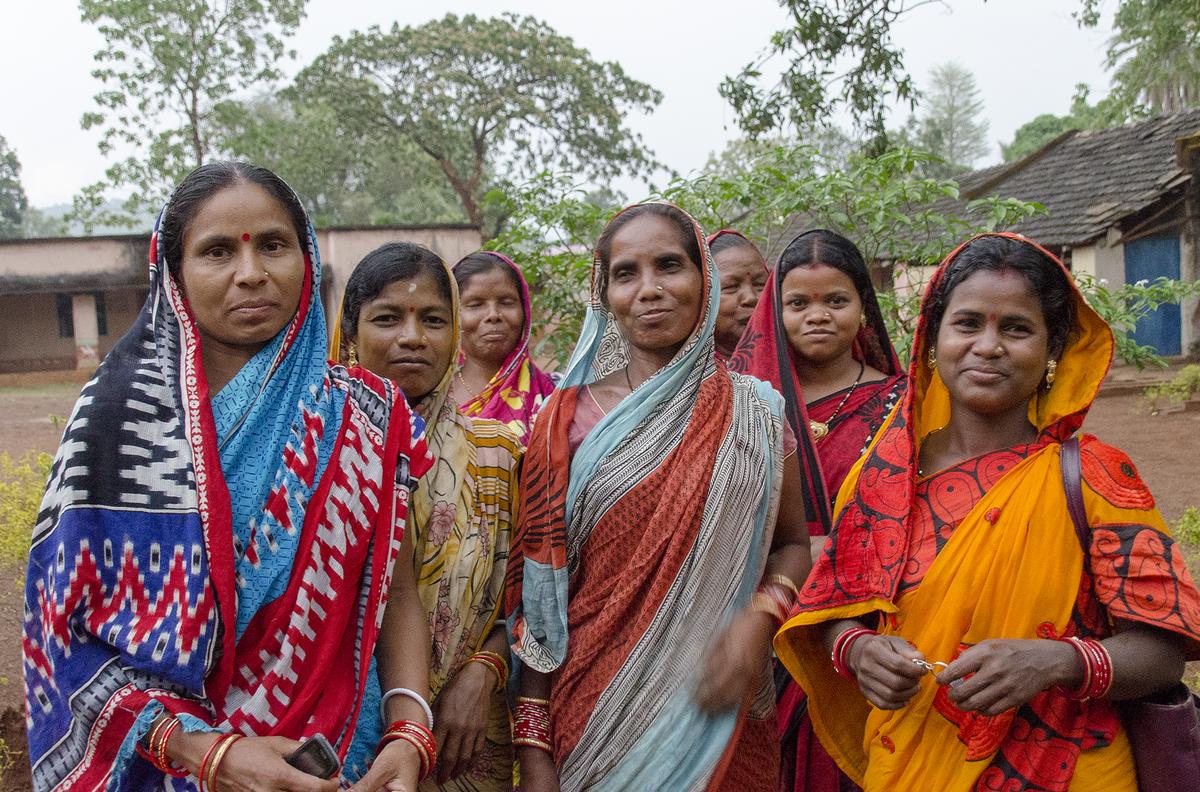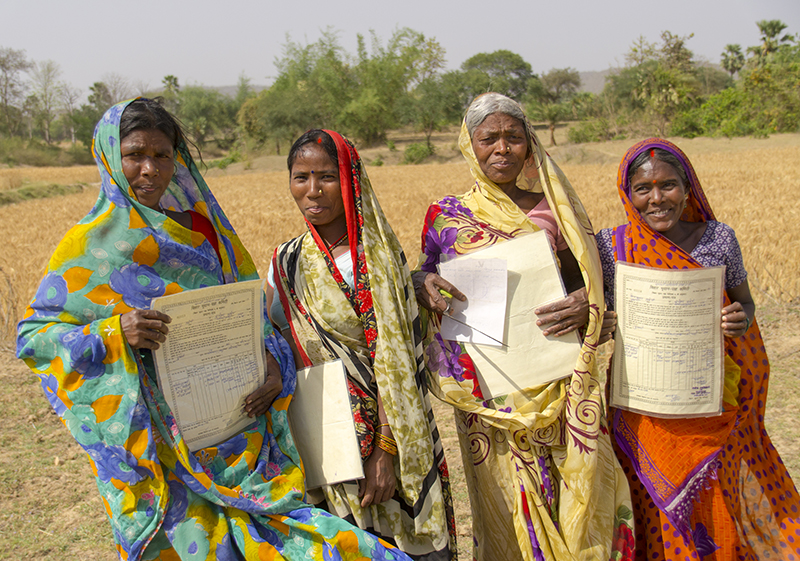
This blog originally appeared on Skoll Foundation.
By Shipra Deo
On the 2019 International Day of Rural Women, Landesa’s Shipra Deo explores how land rights are an essential element for overturning misperceptions about the role of women in society and on the farm.
In a workshop with a group of agronomists who work in agriculture extension in India, I ask the participants to draw the picture of a farmer with whom they work. All but one of them draw male figures.
I go to farmer fairs organized by universities, the State Department of Agriculture, and agri-input companies. Most of the farmers visiting there are men. The scientists are men. The company representatives are men. Those organizing meetings and those attending are men.
I attend a policy meeting organized by the state agriculture department. All sitting on the dais are men. All in the audience are men.
I watch agriculture programs on television, listen to agriculture programs on the radio, read farming magazines, and look at the advertisements for agricultural inputs – fertilizer, pesticides, seeds. Everywhere I see farmers being addressed as Kisaan Bhai (farmer brother).
I visit a state agricultural extension center, where rules stipulate that 33 percent of training participants must be women. I find that while centers conduct trainings for men on multi-layer farming, operation of modern farm implements, and drip irrigation technology, for women they organize trainings on making pickles and drying vegetables.
I look at the preschool text books. While teaching children about “people who help us,” the figure of a farmer is invariably male.
Traditions, customs, and patriarchal institutions push a narrative that farming is dominated by men. But the reality in the world’s rural places—in India and beyond—reveals a different story.
Traveling the countryside—in Uttarakhand, Uttar Pradesh, Bihar, Gujarat, Assam, Karnataka, Odisha, Kerala – one sees women shouldering responsibility on the farm. Sudevi prepares field bunds. Chenamma transplants paddy. Ramwati harvests potatoes. Anusuya weeds out unwanted plants. Lalitha winnows a wheat harvest. Sukanya sorts tomatoes. Rajrani sells vegetable in the local market.

Women in Duari village, Gaya district, Bihar state hold their land titles.
Lack of ownership
The 2011 census suggests that four out of five women workers in rural India work in agriculture—as owner cultivators or as wage workers. Still, only 13 percent of landholders are women. Micro studies suggest that women own only about 2 percent of the country’s farmland.
I meet my friends and colleagues from Kenya, Myanmar, Tanzania, China, and Bangladesh. They tell me things are not much different in their geographies. Women make up an estimated 43 percent of the global agricultural labor force, but only 15 percent of the world’s landholders are women.
What explains this contradiction? Women’s lack of ownership to land compromises their identity as farmers. It makes them invisible within the entire agriculture value chain. Our society so strongly associates farming with men that women’s key role in feeding India—and the world—is overlooked.
As a result, women’s contribution to agriculture becomes an extension of their unpaid household work. Unrecognized as farmers, they are not included in agricultural trainings and extension services, and agriculture research is not targeted to their needs or attuned to their perspective and knowledge. Women are often not able to benefit from various agriculture support programs – like credit, subsidies, and crop insurance—all of which continue to be linked to land ownership. They are not able to make sustainable investments in agriculture—either to control soil erosion or to increase water use efficiency.
Untapped potential
This disparity leaves millions of women farmers unable to unlock their full potential as cultivators and deprives their family of better farm yields. According to the FAO, if women farmers had equal access to resources, credit, farming equipment, and new technologies, yields could increase by 30 percent per household, and countries could experience an increase in agricultural output by 2.5 to 4 percent.
While women do not receive the identity and the dignity they deserve, they are unable to contribute fully to the economy. This results in high costs both in terms of economic and human development.
A recent report by the World Bank finds that in 40 percent of the 189 countries reviewed, women continue to face some legal constraint on their ability to own, inherit, or otherwise use property. In most of these countries, land is owned by men and is inherited along patriarchal lines.
Women farmers deserve their due recognition and rights. How can this be achieved?
Strengthened rights
A host of international treaties, including the International Declaration of Human Rights, the International Covenant on Economic Social and Cultural Rights, and the Convention on Elimination of All Forms of Discrimination against Women, acknowledge the centrality of land to fulfilling human rights. Statements by treaty monitoring bodies, international rapporteurs and working groups have also interpreted women’s rights to land as fundamental to fulfilling rights to livelihood, housing and food, as well as rights to an adequate standard of living, self-determination, and cultural participation.
But the violations of women’s rights are still widespread.
There is wide recognition that women need stronger laws, rules, and regulations, backed by implementation and services that protect against and prevent violation. At Landesa, we work to bring this recognition into practice. We help governments design stronger laws and policies to strengthen women’s land rights, and collaborate with them for effective implementation. In India, Landesa has collaborated with state and local governments to make laws and policies more gender responsive, to impart land rights curriculum to elected representatives, to sensitize revenue officials on women’s land rights, to deliver land literacy training to hundreds of thousands of rural women, to grant clear and explicit rights of women on forest land, and much more. We are doing similar work in Myanmar, China, Tanzania, Liberia, and elsewhere.
We know that for rural women, stronger land rights opens doors to a life of dignity, opportunity, and the ability to assert themselves. Land provides a foundation for their identity as farmers, empowering them to take control of their own stories.
